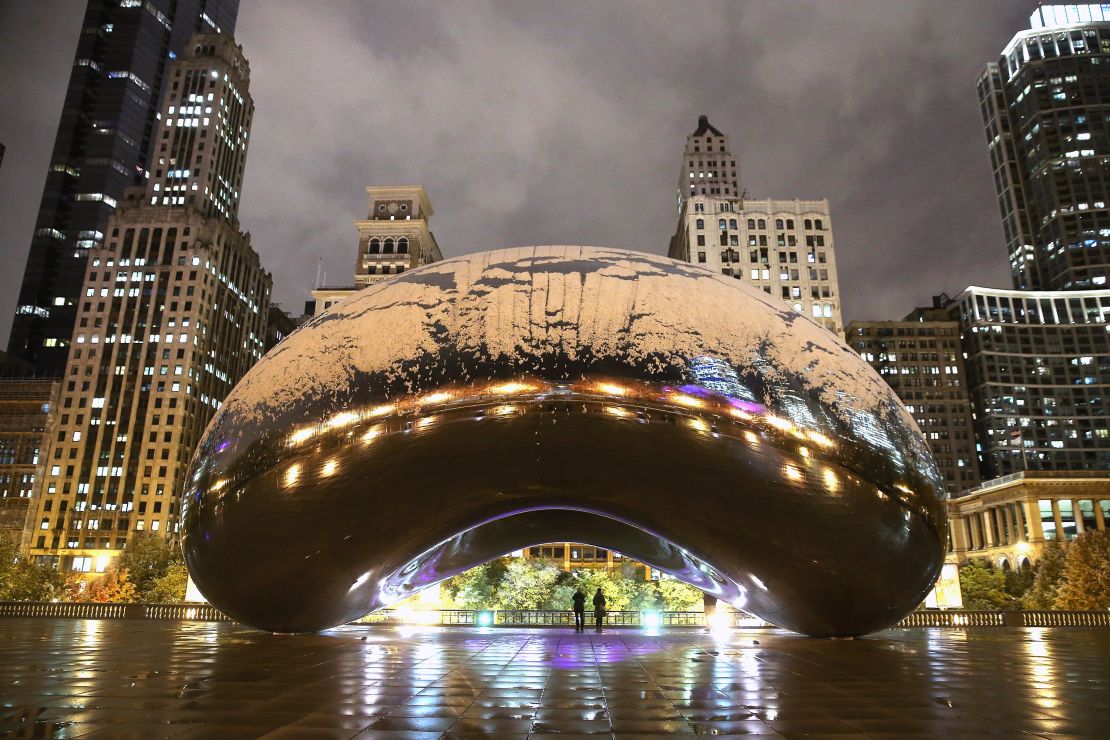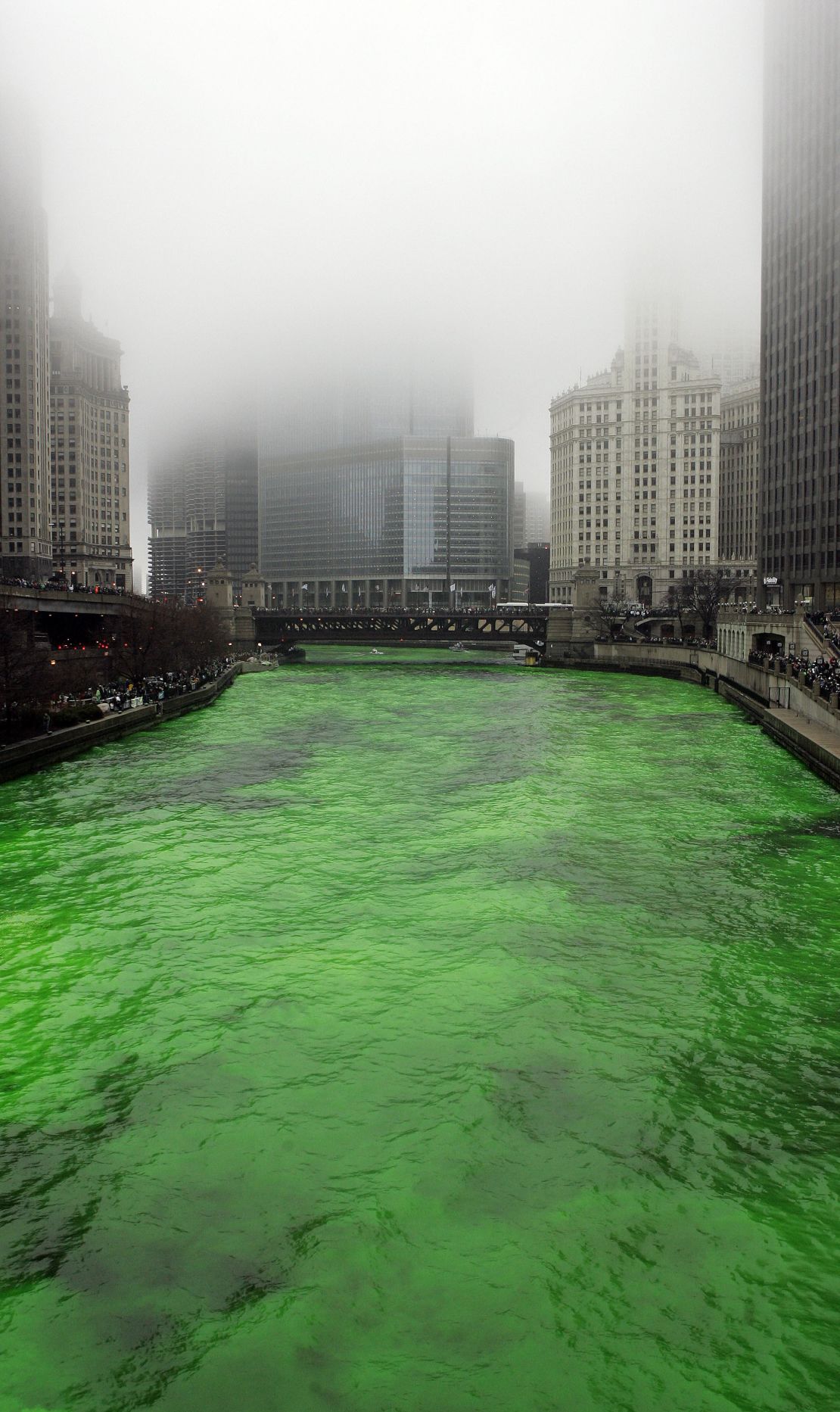Story highlights
"Chicagoland" is a nonscripted, eight-part docuseries about issues facing the city
The CNN Original Series airs Thursdays at 9p/10pET
Not familiar with Chicago? Here you'll find some things you might not know
For example: Do you know what Dibs is? How about a jibarito? Ever pass through a gangway?
In the pilot episode of “Gilmore Girls,” 16-year-old Rory meets her soon-to-be boyfriend, Dean, the new kid in town. Dean tells Rory that he has moved there from Chicago.
Rory’s response: A monotone, “Chicago. Windy. Oprah.”
Is your knowledge of Chicago limited to just its clichés and celebrities?
There’s so much more to the Windy City (for example, don’t ever call it that), which just celebrated its 177th birthday.
So let’s sift through some of the things you really should know about Chicago:
1. The Food
Chicago is very food-centric, but it isn’t all hot dogs and pizza.
“Chicago is such a diverse city, and it’s a city of neighborhoods,” explained writer Britt Julious, a lifelong resident, “a city comprised of all different types of ethnicities, that we have so many specifically regional food traditions that that makes it a great place to be. I’m always really surprised when I go to other places and I realize they don’t have jibarito sandwiches.”
What’s a jibarito sandwich?
“It’s a sandwich but it’s not made using bread,” said Julious. “So instead of bread it’s made using fried plantains. It’s so good and it’s so rich and it’s amazing. It’s the only thing that you’ll eat for the day: it includes meats, cheese, lettuce, and sometimes tomato, but it varies from place to place.”
The sandwich, Julious explained, was created about 40 years ago at the Puerto Rican restaurant Borinquen in Humboldt Park. Other places in Chicago make jibaritos, but Borinquen is considered the original.
Julious also told CNN that most Chicagoans don’t actually like Chicago-style deep-dish pizza.
They’ll usually eat the other Chicago pizza – the one people don’t talk about – which is thin crust, cut in squares, usually with cheese and sausage.
“I didn’t have the stereotypical deep-dish pizza until I was about 15,” Julious said.
Chicago does have more than its fair share of hot dog stands.
Eatocracy: Chicago dogs that cut the mustard
Rule #1: Poppy seed bun. Always. No exceptions. Whatsoever.
Rule #2: No ketchup. Ever. No exceptions. Whatsoever.
“Even if you’re getting fries, you have to figure out your own way of getting ketchup,” said Julious.
2. Willis Tower? Does not compute! Does not compute!
It’ll always be the Sears Tower. Apparently, the 108-story, 1,451-foot skyscraper – once the tallest building in the world – was officially renamed Willis Tower nearly five years ago (Does not compute!). The second-tallest building in the U.S. (“I think I see my dad”), and the eighth-tallest freestanding structure in the world remains one of the city’s most popular tourist destinations, attracting over 1 million visitors (who think they see their dads) to its observation deck annually.
Julious mentioned some other places whose new names will never quite sit right: “U.S. Cellular Field? No! That’s Comiskey Park. It will always be Comiskey Park. It’s so funny because I forget what the new names are. U.S. Cellular Field is an awful name.”
On a similar note, the public sculpture that everybody refers to as “The Bean” is actually called Cloud Gate.
“I had to think about what the actual name of it was,” Julious exclaimed.

Cloud Gate is the official name of the sculpture, created by Indian-born British artist Anish Kapoor, “but the only people I know who call it Cloud Gate are people who are not even from the state, really.”
3. Dibs!
Even though Chicago has an extensive public transportation system, it also has a very heavy car culture. The harsh winters, in turn, give way to a seasonal occurrence known as Dibs.
“Dibs happens in winter when it snows, which it does a lot in Chicago,” said Julious. “Because people oftentimes don’t have garages, they will shovel out the space around their cars (parked on the street) and shovel out a space for themselves and then they will put lawn chairs or tables or kids’ toys in the parking spot to call dibs on it.”
The stuff remains in the spaces all day (Yep, there’s a Tumblr), while the Dibs-caller is out working, shopping, socializing, etc. Some people totally respect Dibs, others get very angry about it.
Julious has witnessed many Dibs-fueled arguments, ranging from ridiculous squabbles to nasty notes to all-out street fights.
“Some people don’t like Dibs at all,” she said, “so I’ve seen incidences where people will go up and down a block and collect all of the furniture that was put out on the street – and it’s usually things like lawn chairs.”
“This was the worst year for Dibs,” because of the huge amounts of snow, Julious told CNN. “One of my neighbor’s tires got slashed because someone thought she’d taken their Dibs spot, when in fact someone else during the day had just moved a lawn chair, parked there, and then left. So my neighbor parked there and then they slashed her tires.”
4. Chicago is ‘a city of neighborhoods’
Chicago is not a particularly glamorous city (although you can certainly find premium shopping, dining and housing). In fact, there are very few buildings in the city that existed prior to the Great Chicago Fire of 1871. For the most part, the buildings are under 115 years old.
“It’s very much a hardscrabble working-class union town,” said Julious, “so a lot of the traditions that make the city so great are based around that sort of culture.”
Map: Explore Chicago’s neighborhoods
Pride in one’s neighborhood, from huge parks to lots of green space to beautiful waterfronts, sets Chicago apart from a lot of other cities.
“In other cities, neighborhoods have names,” said Julious, “but Chicago is a city of neighborhoods. So there’s neighborhood names and sub-neighborhood names. For example: Officially it’s Lake View, but there’s Lake View, there’s East Lake View, there’s Boystown, there’s Wrigleyville, there’s DePaul. People who are from here don’t always use the actual official names. Officially, I live in West Town, but I live in the East Village area of Ukrainian Village, and someone who’s from here is going to know what those terms are. As someone who’s lived here my whole life, 26 years, whenever I meet someone who doesn’t know what the East Village is, I know that they probably just moved here.”
5. The traditions
Yes, the Chicago River is dyed green in honor of St. Patrick’s Day and yes, it’s very touristy, but by and large, Chicagoans enjoy the festivities.

“It’s a really nice family event,” said Julious. “The things that locals tend to avoid are the South Side parade and the drunkenness that follows. … That will bring in a lot of 20-somethings who live in the suburbs. That’s the sort of thing that people tend to avoid, whereas the dyeing of the river happens around 9 o’clock in the morning, and it’s usually lots of families, and it’s very sweet and wholesome. I’ve been to it a couple of times. The events that Chicagoans tend to avoid are things like Taste of Chicago, that’s a bit of a hot mess.
Julious mentions another Chicago tradition: music and dance.
“Chicago has this huge, rich musical history which, yes, blues, but also stepping, house music, which was born here in the ’80s, and now juking music is popular with young black South Side Chicagoans, and that’s made its way across the globe as well.”
CNN iReport: What do you love about Chicago?
Chicago-style stepping, for example, originated on the South Side. A style of dancing that’s typically popular with African-Americans in their 40s, 50s, and 60s, stepping is generally done to R&B and funk.
“It’s pretty big here,” said Julious. “There are a lot of stepping parties, stepping contests, stepping events.”
The house scene is also still very much alive, as house music was born in Chicago, she said.
“House music was invented here by Frankie Knuckles, and it still has a culture here. And that’s why we have the most dance music festivals in the entire country,” said Julious.
6. Why Chicago is really called the Windy City
Theories abound, and one of them focuses on politics.
Even though Chicago is plenty blustery and full of gusts, gales and breezes off Lake Michigan, some people think the term Windy City refers to politicians’ pronouncements – blowing hot air, if you will.
Julious says many Chicagoans consider their city a bastion of classic big-city corruption.
“The thing about Chicago is that you know who you’re voting for but you don’t actually know if your vote counts,” said Julious, “and everyone runs under the assumption that everyone else is corrupt. … There’s the phrase ‘Chicago Works’ – Chicago ‘works’ in its own way.”
In other words, certain things get done and certain things never get done.
“Things just happen and that’s just how things work, and it might not work well but it’s sort of what people are used to, so they don’t question it very often.”
All that being said, Chicagoans under no circumstances call their hometown the Windy City. They don’t call it Chitown either.
7. Don’t call it a sneaker
It’s been here for years, and it’s known as a gym shoe, thank you very much.
“Sneaker is a horrible name,” said Julious. “I hate it.”
Incidentally, the gym shoe is also the name of a unique but in-demand Chicago sandwich.
In addition, Chicagoans say “pop,” not “soda.” The train is called the El (which stands for elevated train), even if it’s underground, and a gangway is a passage similar to an alley that very narrowly separates two buildings or homes.
Chicagoans, tell us what we missed! List the things about Chicago that everyone needs to know in the comments section below or submit your story with a photo or short video to iReport.
What stereotypes need to be debunked? What are your favorite uniquely Chicagoan traditions? What do you love and/or hate about the city’s history, geography, culture and politics?






























